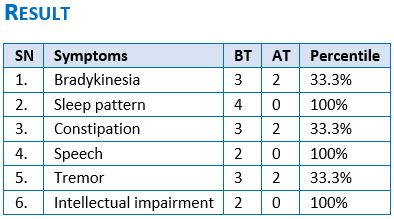Effect of Shashti Shali Pinda Swedan and Sahchar Tail Matra Basti in the management of Young Onset of Parkinson Disorder (YOPD) - A Case Report
DOI:
https://doi.org/10.21760/jaims.8.6.41Keywords:
Shashti Shali Pinda Swedan, Sahchar Tail Matra Basti, Young Onset of Parkinson Disorder, YOPD.Abstract
The young onset Parkinson disease is a progressive neurodegenerative disease characterized by both motor and non motor features. The diseases affect families and caregivers through its progressive degenerative effect on mobility and the muscle control.[1] The main difference between young onset of Parkinson disorder (YOPD)and the late onset of Parkinson disorder (LOPD) is genetic etiology and clinical symptoms e.g., dystonia and levodopa induced per dyskinesia are common in YOPD. YOPD person carrying a greater social economic burden compared to late onset of Parkinson disease due to age factor. YOPD Patients more prone to levodopa related motor complication. Parkinson’s disease is referred to in the ancient Indian medical system of Ayurveda under the name Kampavata which is characterized by Kampa (Tremors), Stambha (Rigidity), Chesthahani (Akinesia) & Gativikriti (Gait Disorders). The case study is of a 45 years old male who has been diagnosed with early stage idiopathic Parkinson’s disease. No satisfactory treatment is seen in contemporary system of medicine so treatment is planned in here study.
Downloads
References
Agnivesh, Charak, Dridhabala, Charak Samhita, Sutra-Sthana, Swedadhyaya, 14/41, edited by Kashinatha Shastri and Gorakhnath Chaturvedi, Chaukhambha Bharti Academy Varanasi, Reprint; 2013. p. 290.
Vaidya Yadavagi Trikamji Acharya, Charaka Samhita of Agnivesha. Varanasi: Choukhamba Surbharati Publications; 2013, 1stedition, Sutrasthan (20/13).
https://www.sciencedirect.com/science/article/abs/pii/S1740676504000690















